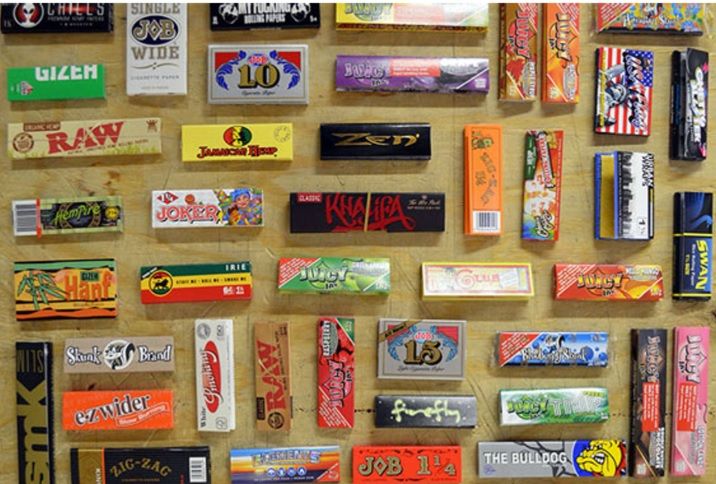The Evolution of Rolling Papers: From Ancient Times to Modern Innovations
Rolling papers have come a long way since their humble beginnings. From ancient civilizations to modern innovations, the history of rolling papers is a testament to human ingenuity and the desire for a convenient and enjoyable smoking experience. In this article, we will explore the fascinating journey of rolling papers, from their earliest origins to the diverse range of options available today.
Ancient Origins: Smoking Through the Ages
The act of smoking has been a part of human culture for centuries, with evidence of tobacco and cannabis usage dating back thousands of years. However, early smokers did not have access to rolling papers as we know them today. Instead, they utilized pipes or plant leaves to smoke their preferred substances.
In South America, a pictograph from around 600 AD depicts a Mayan man smoking a roll of tobacco strings tied together with a leaf, providing evidence of early smoking practices. In India, the history of marijuana smoking goes back even further. These early smoking methods laid the foundation for the development of rolling papers in the years to come.
Rolling Papers in the Old World: A European Innovation
As tobacco became a prized commodity in Europe during the colonization of the Americas, people sought unique ways to conserve and smoke this newfound substance. The elite class would flaunt their cigars rolled in tobacco or palm leaves, while discarded cigar butts would be collected by the less fortunate. These discarded butts would then be repurposed by rolling the tobacco in scraps of newspaper.
Peasants in Spain and other parts of Europe, lacking access to rolling materials, ingeniously used newspaper scraps to smoke tobacco. Despite the presence of dangerous chemicals like lead and cadmium in the paper, these individuals marveled at their luck and ingenuity.
The Birth of Rolling Paper Companies
The development of rolling papers into a thriving industry can be traced back to the 17th century in Spain. Pay-Pay, one of the oldest rolling paper producing companies, emerged in 1703. The company's inception marked the beginning of a long line of rolling paper manufacturers that would shape the industry.
In 1660, Alexandro Rizlette de Cramptone Lacroix, a Frenchman, discovered papers carried by returning soldiers who had fought in Spain. Intrigued by their potential, Lacroix began producing rolling papers himself. In 1736, the Rizla company was founded, and by the mid-1800s, the company had transitioned to using rice paper, giving rise to the name Rizla+, derived from the French word for rice.
While Rizla+ became a prominent rolling paper brand, other companies also entered the market, each with its own unique regional presence. These companies played a crucial role in the evolution and diversification of rolling papers.

Innovations in Rolling Papers
Rolling papers themselves have remained relatively simple throughout the centuries, with innovations primarily focused on production processes, packaging, and small product features. The composition of rolling papers typically involves a combination of paper pulp, hemp, flax, and rice, resulting in a range of different rolling paper products.
In the early 1900s, flavored rolling papers made their debut, adding a new dimension to the smoking experience. Bull Brand's Liquorice rolling paper, inspired by this heritage, continues to be a popular choice among smokers. Packaging innovations also played a vital role in ensuring that each smoke was perfect, particularly for blue-collar workers who saw smoking as a sole pleasure.
The Modern Era: A World of Rolling Paper Choices
Today, the rolling paper industry boasts numerous producers and a wide range of smoking accessories. Modern production methods have driven down prices, allowing customers to create their own unique rolling cigarettes. Brands like RAW, OCB, Elements, and Juicy Jays have gained popularity, offering smokers a variety of options to suit their preferences.
The availability of different rolling paper materials, sizes, flavors, and designs has revolutionized the smoking experience. From ultra-thin rice papers to hemp wrap blunt papers and terpene-infused papers, there is something for everyone. The use of modern machinery enables the mass production of these innovative papers, ensuring they are readily accessible to consumers worldwide.
The Future of Rolling Papers
As the legalization and acceptance of cannabis continue to grow, the demand for rolling papers is expected to rise. With more smokers entering the market, the competition among rolling paper brands is fierce. Companies are constantly seeking new ways to stand out, whether through unique packaging, creative marketing, or innovative product features.
The future may bring further advancements in rolling paper technology, packaging, and customization options. Display boxes, once a staple in dispensaries and retail locations, may undergo innovation to appeal to consumers' changing tastes. Additionally, the rise of e-commerce has opened up new avenues for purchasing rolling papers, with subscription boxes and bundled offerings becoming popular choices.
Conclusion: A Testament to Human Ingenuity
The evolution of rolling papers is a testament to human ingenuity and the desire for an enhanced smoking experience. From the early days of using newspaper scraps to the modern era of diverse options and innovative features, rolling papers have come a long way.
As the rolling paper industry continues to evolve, it is clear that consumers have more choices than ever before. Whether it's the classic brands like Rizla+ or the newer, trend-setting names like RAW, smokers can find rolling papers to suit their preferences and enhance their smoking rituals.
So, the next time you roll a joint or a cigarette, take a moment to appreciate the long and fascinating history behind those humble rolling papers. They have truly revolutionized the way we smoke, providing a convenient and enjoyable experience for smokers around the world.





